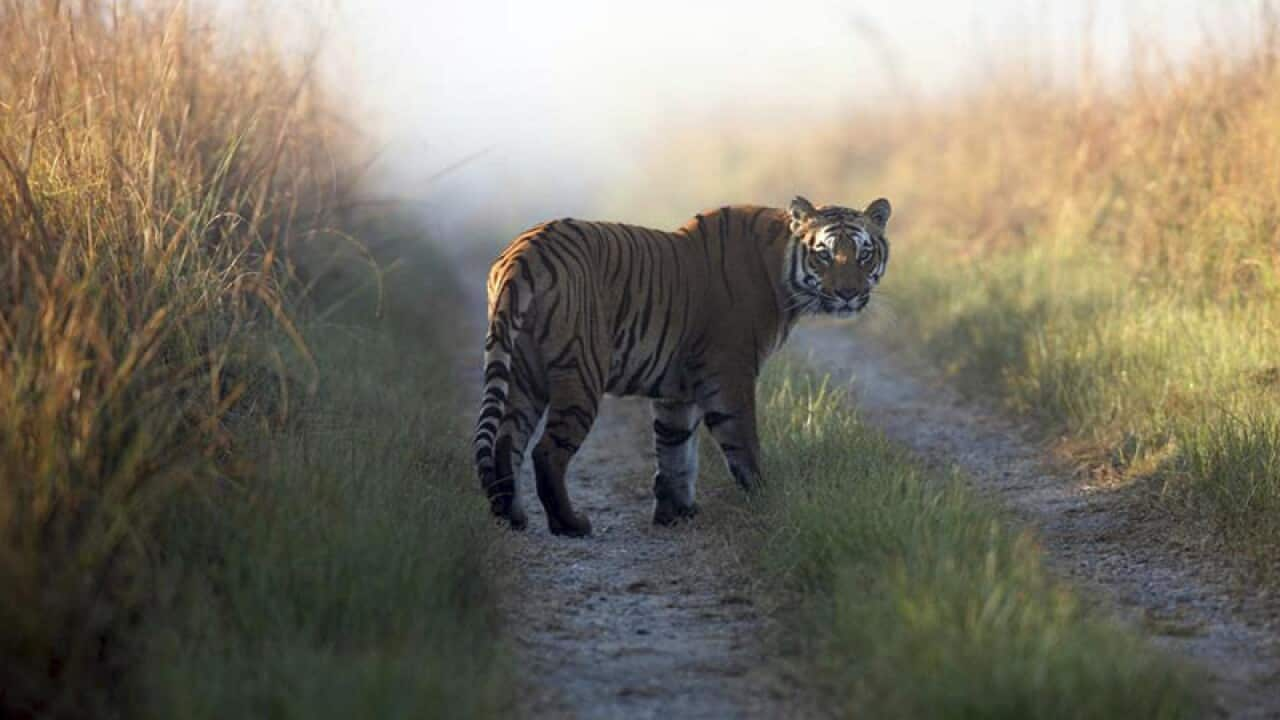Countries with wild tiger populations have agreed to do more to protect tiger habitats that are shrinking drastically because of deforestation and urban sprawl.
Representatives from the 13 Asian countries with tigers, meeting this week in New Delhi, issued a resolution acknowledging the forests in which tigers lived were inherently valuable themselves and worthy of protection.
Those forests could help preserve economic growth by safeguarding water supplies, improving air quality and providing homes for not only tigers but also birds, frogs and other mammals.
"Before, there's always been this conflict of development versus conservation, as if countries had to choose," said Sejal Worah, the program director for World Wildlife Fund in India.
"But in this resolution, it clearly states that natural capital is important to the economy of a country," she said. "Countries understand that preserving tiger habitats does not compromise growth. And that's important. That's new."
The world's tiger countries are all in Asia: Bangladesh, Bhutan, Cambodia, China, India, Indonesia, Laos, Nepal, Malaysia, Myanmar, Russia, Thailand and Vietnam. India has the most by far, with about 2500. None of the others have more than 500 and some have just a few.
By 2022, they want to double the world's wild tiger population from the all-time low of 3200 hit in 2010.
On Monday conservation groups announced that the world's tiger count had gone up to 3890, according to 2014-15 survey data. That marked the first increase in the wild population census in more than a century. But that did not necessarily mean there were more tigers in the wild. The higher number may just mean scientists are getting better at counting them, with more sophisticated survey methods including camera traps and DNA analysis of scat.
An actual increase in wild tiger populations would also be hard to reconcile with the fact that their habitat is shrinking so fast. In just the last five years tigers lost 40 per cent of their remaining natural habitat, according to the International Union for Conservation of Nature.
"The tiger is still teetering on the brink of extinction, and a too-hasty celebration of an increase in tiger numbers will only disservice efforts for the species' conservation," said John Goodrich, tiger program director at the New York-based big cat conservation group Panthera.
He and other tiger biologists said it was unrealistic to think the world could double its wild tiger population by 2022, unless tiger landscapes were vastly increased. Today tigers roam across just 7 per cent of their historical range.
"Rather than engaging in these tiger number games that distract them from reality, conservationists must now focus on enhancing and expanding recovery and monitoring of source populations, while protecting their remaining habitat and their linkages," Goodrich and the other biologists wrote.
India, home to about two-thirds of the world's wild tigers, has agreed to strengthen controls against cross-border wildlife crimes, including trafficking in animals and animal parts such as tiger skins and bones and rhino horns.

